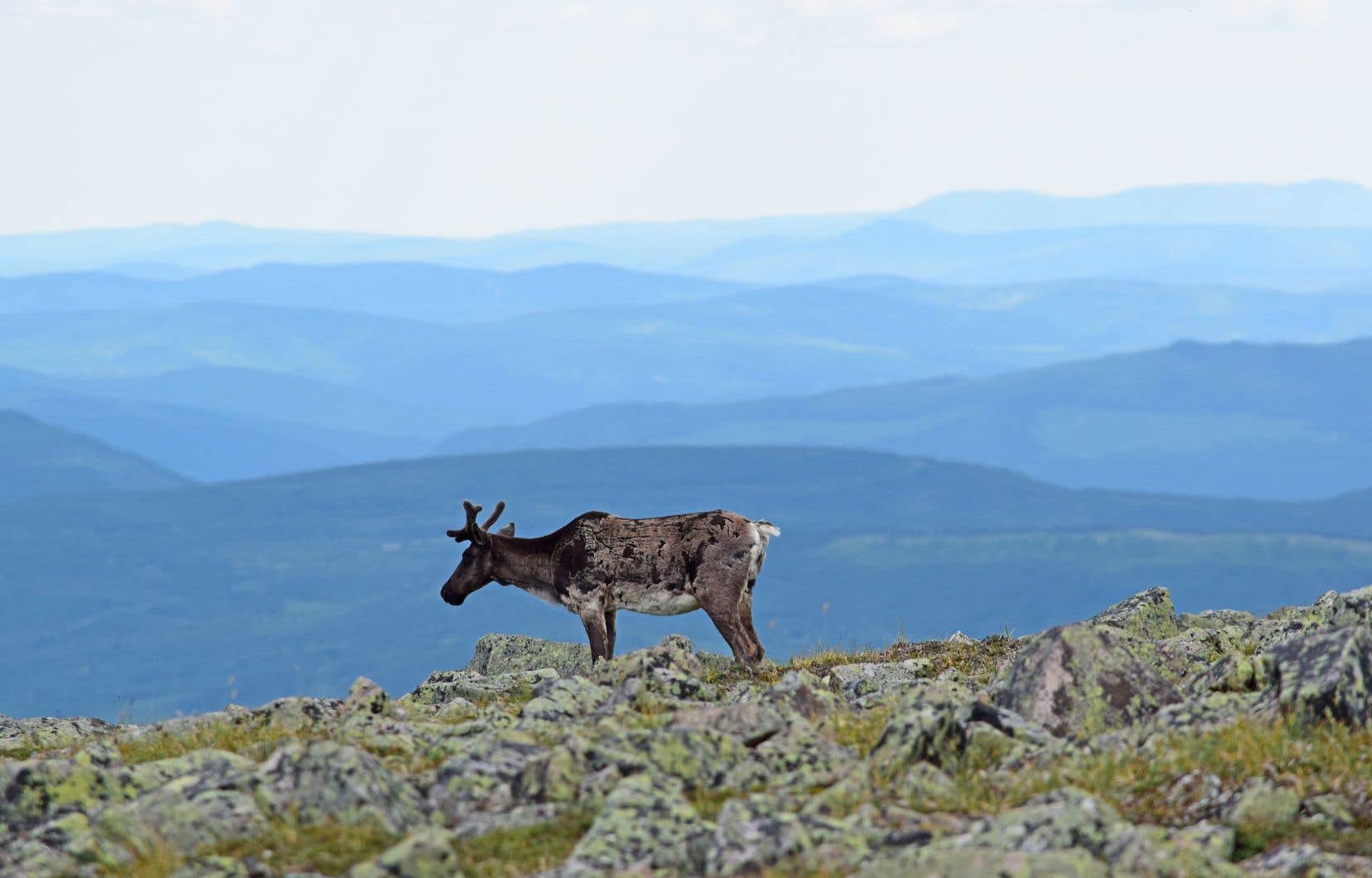Quebec law protects the habitat of all vulnerable species from mining activity, except one: the Gaspésie caribou. An environmental coalition is now asking the Legault government to abolish this exception, which compromises the very survival of this population.
The first version of the Regulation respecting wildlife habitats, dating from 1993, prohibited any disturbing activity in the natural environment of a vulnerable or threatened species in Quebec. But a decree adopted in 2001, while André Boisclair heads the Ministry of the Environment, cracked this protection. Since then, the ban has applied to the wildlife habitat of any threatened or vulnerable species “other than that of woodland caribou, mountain ecotype, Gaspésie population”.
“We are talking about a regulation that targets all vulnerable or threatened species in Quebec, except the Gaspésie caribou,” laments Pascal Bergeron, spokesperson for Environnement vert plus (EVP). ” That does not make any sense ! »
Especially since the decline of the Gaspé herd has accelerated since the middle of the 20the century. In the early 1950s, its population ranged from 700 to 1500 individuals. Thirty years later, there were about 250 left. The last census, carried out five years ago, counted only 70 caribou in the Gaspé; according to experts, barely half of them remain today.
A habitat undermined by claims
The habitat of Gaspésie mountain caribou is almost entirely within the boundaries of Parc national de la Gaspésie, where mining activity remains prohibited. However, part of it comes out of this territory, in the areas of the Madeleine mines and Mont Albert
Mining claims cover nearly 60% of the territory deemed essential to caribou located outside the national park, according to EVP. “We don’t know the extent of all the work done in these areas over the past 20 years,” said Mr. Bergeron. However, he estimates that “there have been at least between 15 and 20 boreholes” in the Mont Albert sector since the adoption of the decree.
Each borehole means mature trees felled and forest roads laid out like so many highways taken by the caribou’s natural predators. “Mining is potentially the most detrimental type of industrial activity” to the species, he says.
It is to halt the decline of the species, considered endangered since 2003 by Ottawa and designated as threatened by Quebec since 2009, that environmentalist groups united their voices on Wednesday to demand an end to this exceptional regime.
In the eyes of this coalition, the exception decreed in 2001 responded first and foremost to the demands of the industry. The company Ressources Appalaches, then directed by the founder and former president of Pétrolia, André Proulx, has carried out drilling work in the sectors exempted by law since 2002.
“It is therefore a safe bet that there was pressure from the mining company responsible for the work in 2001 and 2002 in order to modify the regulations in its favour”, notes the group in a press release.
The caribou, an “umbrella species”
EVP, the Chic-Chocs Mountains Protection Committee, the Gaspé Bay ZICO Conservation Society, Action boréale, Nature Québec and the Québec Better Mine Coalition therefore demand the immediate lifting of the decree adopted in 2001, but also the expansion of the legal habitat of the Gaspésie caribou so that the territory corresponds to the area necessary for the survival of the species.
Better protection of the habitat of the Gaspésie caribou, an umbrella species whose decline symbolizes the general deterioration of an environment, would ensure the survival of several other vulnerable animals that depend on the mature forests prized by these deer, point out these organizations.
“There would be other species to protect at the same time,” points out Louis Fradette, of the Chic-Choc Mountains Protection Committee. He mentions in particular the Bicknell’s thrush, considered vulnerable since 2009, and five pairs of golden eagles who have taken up residence in the Gaspésie park and who remain allergic to logging and all disturbances caused by humans. “There is also the Barrow’s goldeneye, a bird at risk that nests in certain Chic-Chocs lakes and needs old forests,” continues Mr. Fradette. The Gaspésie shrew, unique in the world and specific to Quebec, also shares the habitat of the woodland caribou.
“If the caribou disappears, that means the total victory of the economy,” laments Henri Jacob, president of Action Boréale. “If we are fighting, it is so that there is a minimal victory of nature over economic development. »
The Ministry of Natural Resources and Forests, headed by Maïté Blanchette-Vézina, is due to table its Gaspésie caribou protection plan in June.
